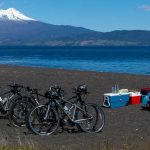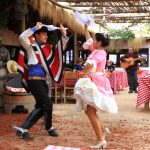An abundance of wildlife accompanies you wherever you go in Argentina. In seemingly the most unlikely of places, in the high desert, on long stretches of empty highway, animals are all around. You might spy a herd of llama-like guanacos grazing on a ridge, or surprise a family of ñandues, South America’s ostrich-like species, who run quickly, but never take flight. And while those roadside surprises can happen at any time once you’re outside major cities, there are also specific destinations where animal sightings are nearly guaranteed. These include bands of raccoon-like coatis with their ringed, upright tails, or colonies of burrowing penguins traipsing across your path. Below are some of the animals that visitors can hope to see on a trip through Argentina.
Coatis
These ring-tailed, raccoon-like mischief-makers are more habituated to humans than you might expect, and will likely come and say hello if you decide to have a snack in Iguazú, which is where you are most likely to see them. They often run around in groups of 10-15 individuals, and make high-pitched, squeaking noises as they run down the paths.
Iguanas
The only native species of iguana in Argentina is locally called the iguana overa, or the black and white Argentine tegu. It can be found in northeast and central Argentina, usually in the clearings of forested areas, and the males may grow to be up to 4 feet long. Fun fact: they are partially-warm blooded reptiles, meaning that during breeding season, from September to December, they can partially control their body temperature. Look for them as you wander the forested paths near the Iguazu falls. In fall and winter they go into hibernation and are seldom seen.
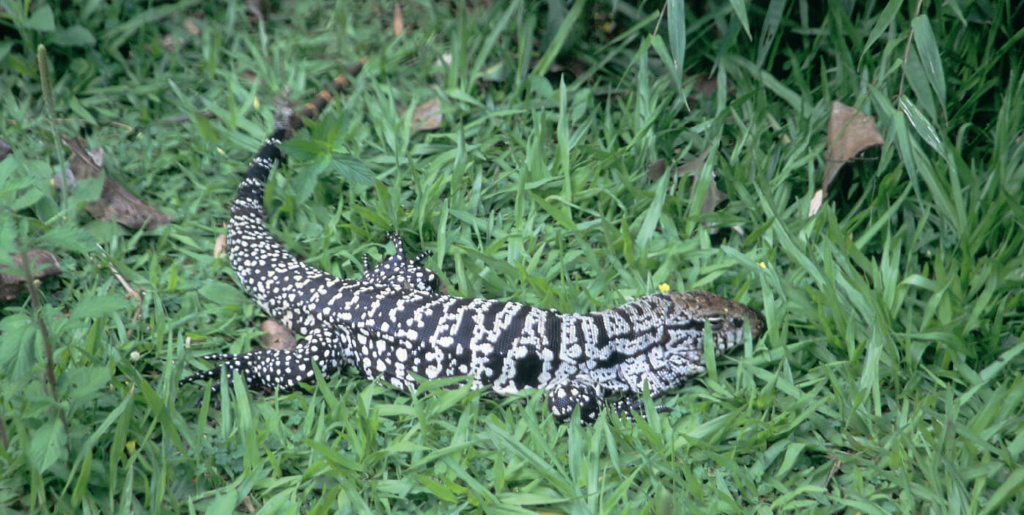
Capybaras
These water-loving, stiff-furred, web-footed animals are actually the largest rodent in the world, and they chirp and squeak like the oversized guinea pigs they resemble. As full-grown adults, they can weigh up to 65 kilos. In Argentina, you’re most likely to see them near Corrientes, particularly in the Esteros del Iberá (Iberá wetlands), or in wetlands in the Litoral area of northeastern, coastal Argentina. They often travel in small groups, but are highly social and may live in groups of up to 100 individuals.
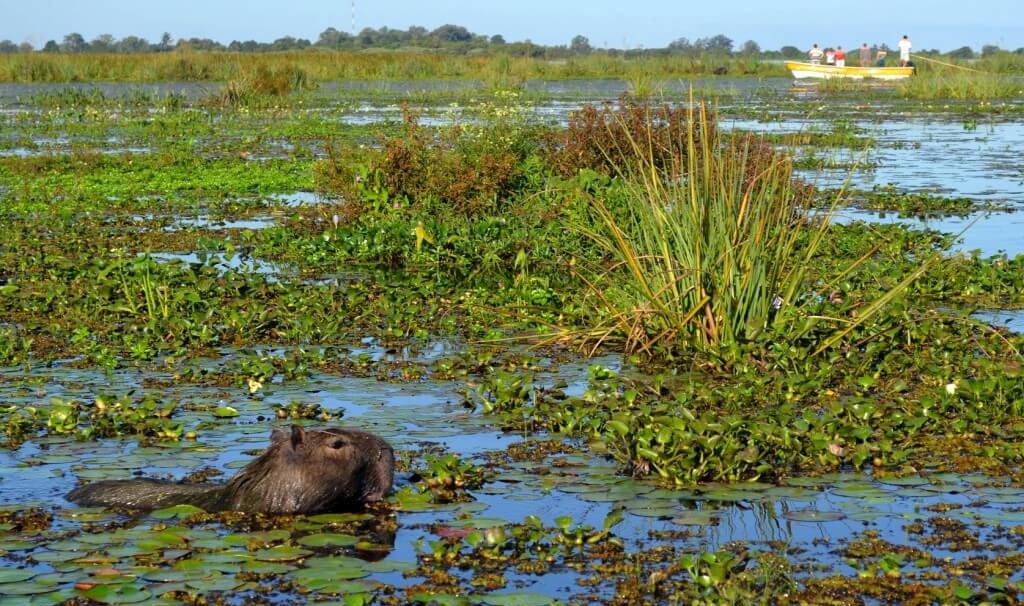
Sea Lions
These massive pinnipeds are also visible on the Valdés peninsula, in colonies of up to about 15 individuals. Males may weigh up to 300 kilos, and given their shaggy mane, it is easy to understand where they get their English name of “sea lion.” In Spanish, they are “sea wolves” or lobos marinos. They can be fierce, and are best seen from viewing platforms.
Orcas
Orcas can also be seen from the Valdés Peninsula, more or less year-round. Orcas hunt seal and sea lion pups in September, October and November near Caleta Valdes and Punta Delgada, and near Punta Norte in February, March and April, particularly at high tide. Orcas are usually best seen from land, and reach swimming speeds of 45 km/hr.
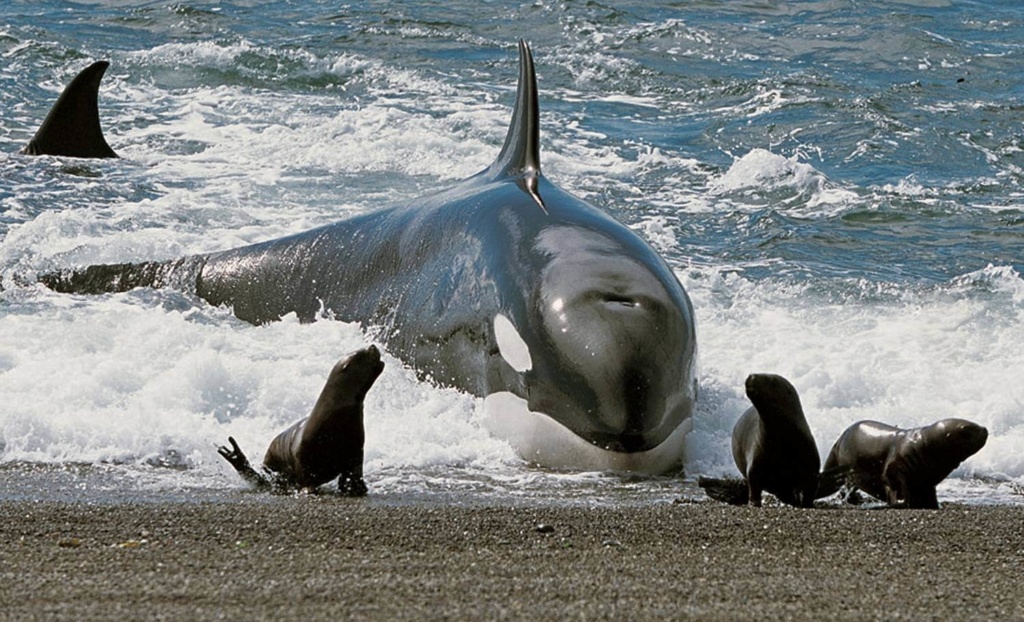
Maras
You have to be quick to spot a mara, or as it is also known, the Patagonian hare. It’s almost the same color as the scrub desert in which it is found. It looks a bit like a jackrabbit with a snubbed face and shorter ears, and moves quickly, unless it’s guarding its young. Full grown they’re about 30 inches long. Look for them on the Peninsula Valdés, where they spend nearly half their day grazing.
Yacaré
The yacaré or yacare caiman is a type of crocodile seen in the north east of Argentina, especially in swampland. The Iberá wetlands or the Litoral area of northeastern coastal Argentina are the best place to see these midsized crocodiles. Adults can measure up to 3 meters in length and are blackish in color.
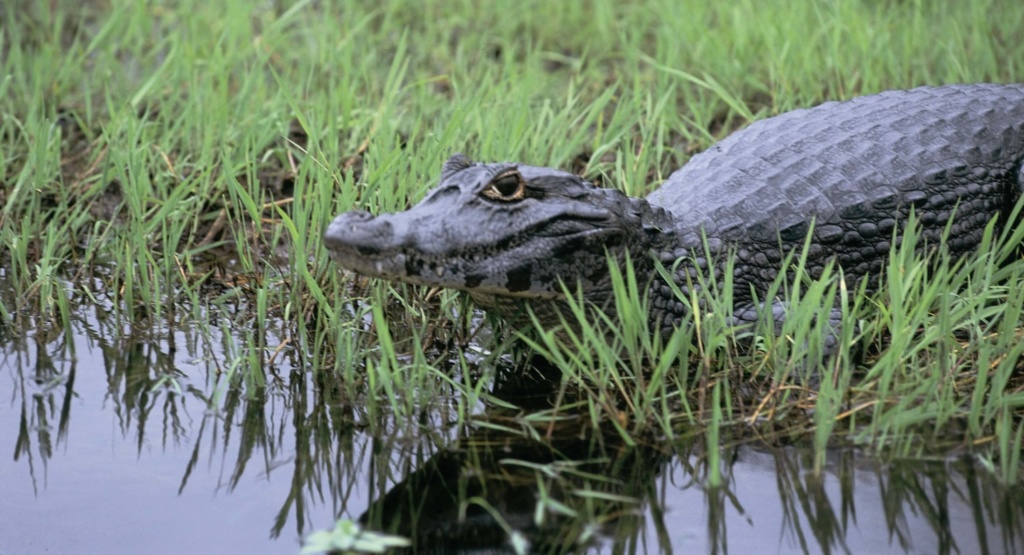
Guanacos
This relative to the camel can often be seen grazing on hilltops and ridges, often in large groups. Unlike llamas which can be anywhere from white to brown to black, guanacos are tawny brown in color. If you see them running at each other and striking their necks, they are juvenile males, engaging in dominance play fights.
Penguins
Magellanic penguins, which dwell in burrows, are present at Punta Tombo, in the Chubut province of Argentina, between September and April. This is the largest colony in South America, with sometimes as many as 1.5 million penguins present. In April the babies have their waterproof feathers, and the colony takes off for richer feeding elsewhere.
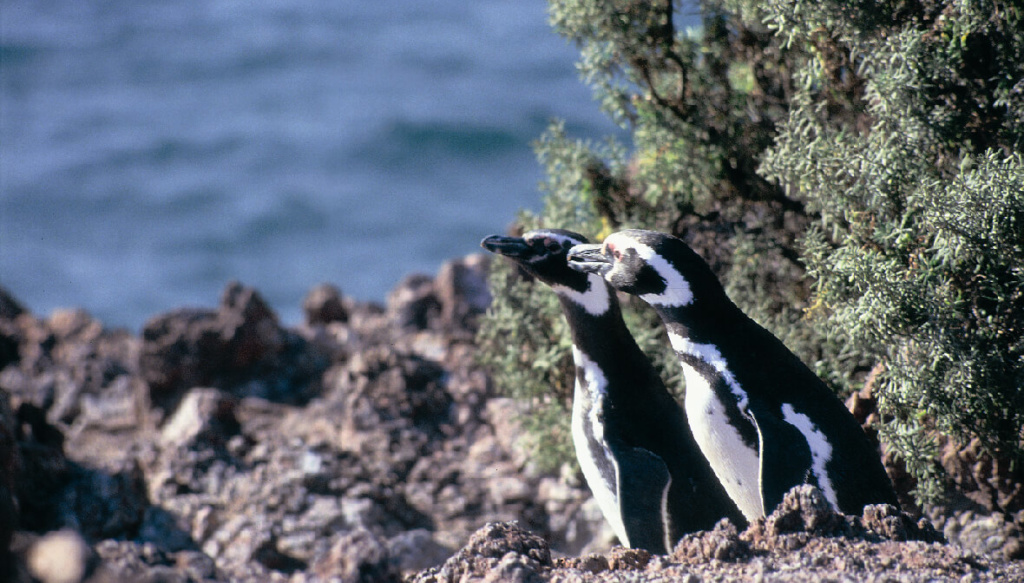
Ñandues
These flightless grassland birds are a relative to the ostrich, and can be seen in Argentina on the Valdés Peninsula. The males incubate the eggs and take care of the brood, and can often be seen with several smaller birds following behind. When fully grown, rheas (as they are called in English) may be 170 centimeters tall. When they run they may open their wings to use as a sail, but they do not fly.
Condors
Seeing Andean condors is a highlight for many visitors to Argentina. In addition to a national park called Quebrada del Condor in Córdoba, they may be visible in other national parks including the Parque Nacional de Los Glaciares, where there is access to the Perito Moreno glacier, as well as near Ushuaia. Their wingspan may be more than three meters, and the feathers at the edges of their wings are projected upward during flight.
